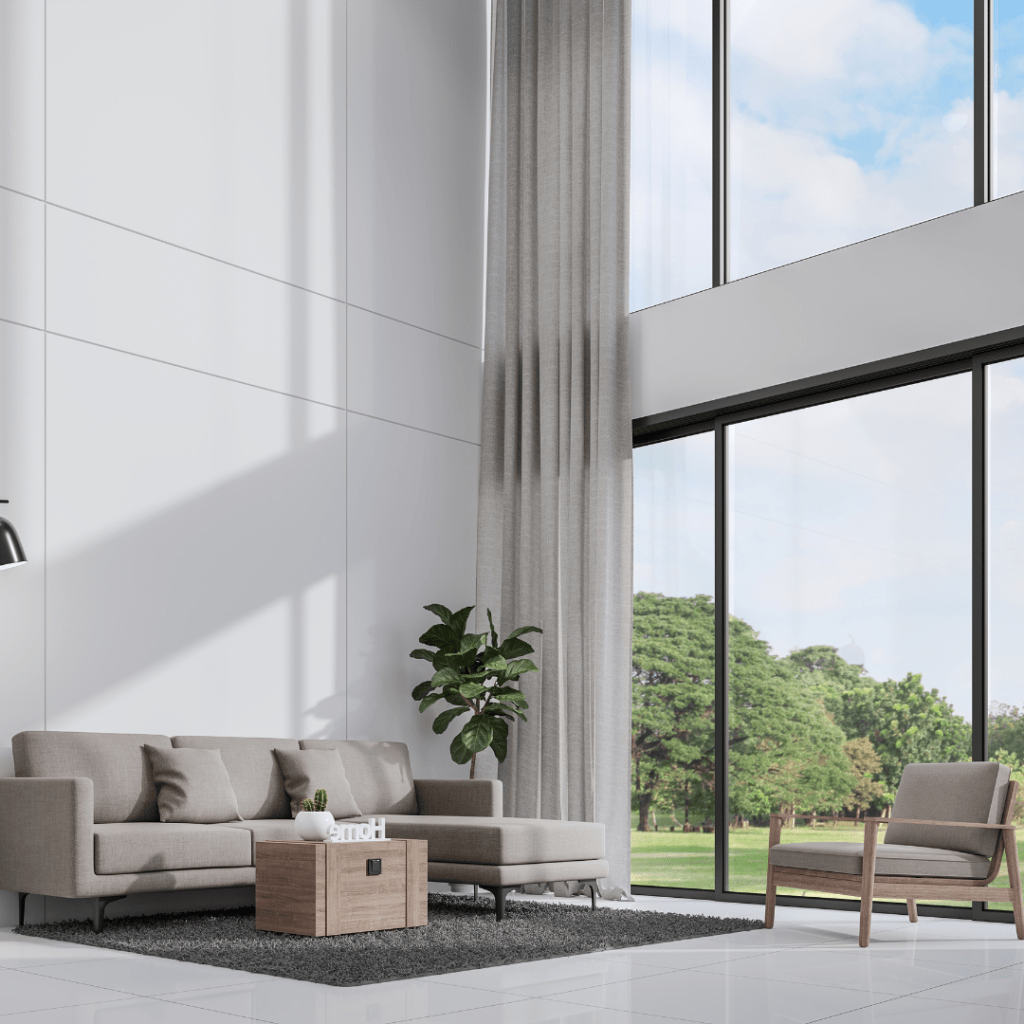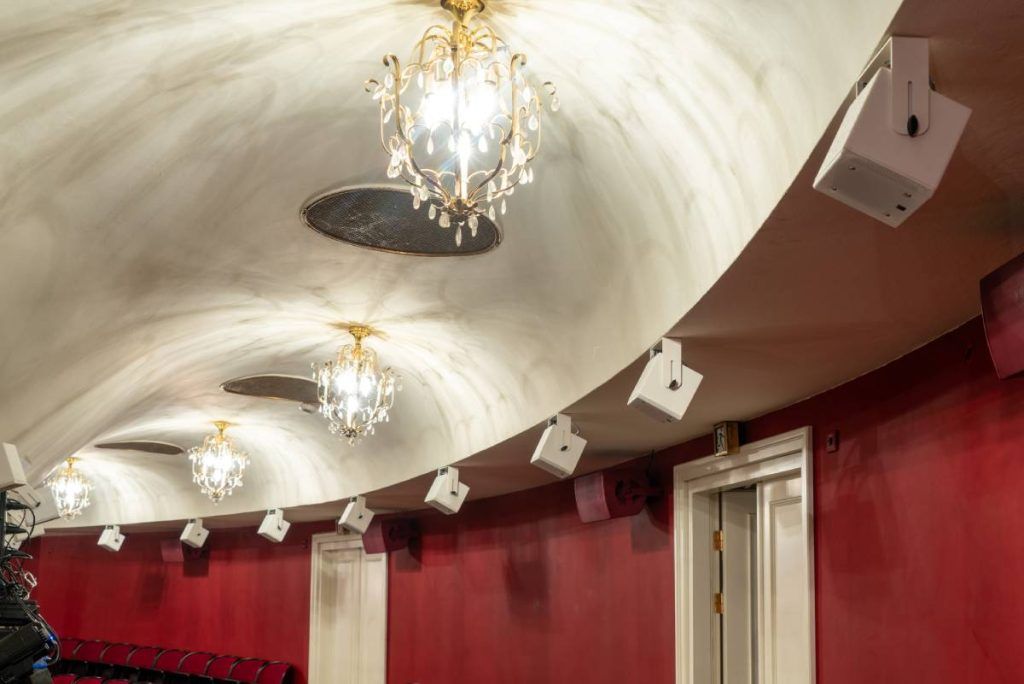What are Active Acoustics and Variable Acoustics? What are Active Acoustics and Variable Acoustics? ...
Active acoustics and variable acoustics are innovative approaches within the field of architectural acoustics. Architectural acoustics creates spaces with optimal sound quality tailored to their specific purpose. This involves managing how sound travels and is perceived in a space, from ensuring clear speech in a classroom to providing rich musical experiences in a concert hall.
Good architectural acoustical design considers various factors such as sound absorption, reflection, diffusion, and transmission. Materials used in construction, the shape and size of the room, and even the placement of furniture and decor can significantly affect the acoustics. For instance, hard surfaces like concrete or glass can cause echoes and reverberation, while softer materials like carpets, curtains, or acoustic panels help absorb sound.
The architectural acoustics challenge is balancing these elements for the desired sound environment. In a theater, for example, the goal is to minimize outside noise while enhancing the clarity and richness of the performance. The focus in an office might be reducing noise levels to improve concentration and communication.
Effective acoustic design improves functionality and comfort while enhancing a space’s overall aesthetic and experience. Therefore, acoustics is a crucial consideration in architecture, impacting everything from the enjoyment of a concert to productivity in a workplace.


What are Active and Variable Acoustics?
Enter the concept of active and variable acoustics, two innovative approaches in architectural acoustics, each addressing the need for adaptable sound environments in various spaces, especially in performance venues like concert halls, theaters, and multi-use spaces.
Active Acoustics
Active acoustics, also known as Acoustic Enhancement, involves using electronic sound enhancement systems to control and manipulate a space’s acoustic characteristics. This system typically includes microphones, processors, and loudspeakers strategically placed throughout the venue.
- How It Works: Microphones capture the natural sound in the room, which is then processed and supplemented with artificially generated reverberation or other sound effects. This enhanced sound is then fed back into the space through the loudspeakers.
- Purpose: The goal is to augment the natural acoustics, especially in spaces that lack the desired reverberation or sound quality due to their size, shape, or construction materials.
- Applications: Active acoustics are useful in multi-purpose venues where the acoustic requirements might vary drastically between different events, such as switching from a symphony concert to a spoken-word performance.
- Why It Matters: Active acoustics matter because they revolutionize how we interact with and manipulate sound environments, breaking down the barriers of physical space limitations and acoustic challenges. By enabling real-time adjustments to the acoustic properties of any given environment, active acoustics empower sound designers, artists, and educators to create immersive, high-quality audio experiences in various settings. This technology enhances the auditory experience for audiences, making it more engaging and versatile, opening up new creative possibilities, and making immersive sound design more accessible and sustainable. By integrating digital audio technologies, active acoustics promotes innovation in the arts, entertainment, and education, making it a pivotal tool in shaping the future of sound design and auditory experiences.
Variable Acoustics
Variable acoustics, on the other hand, involve physical modifications to the architecture or interior of a space to alter its acoustic properties.
- How It Works: This is achieved through movable panels, adjustable curtains, and other mechanisms that can change the sound absorption, reflection, and diffusion in a room. By altering these elements, the acoustics can be tuned to suit different performances or events.
- Purpose: The aim is to provide a versatile acoustic environment that can be adapted based on the specific needs of each event, enhancing the experience for both performers and audiences.
- Applications: Variable Acoustics are ideal for spaces that host various events, from orchestral performances requiring a rich, reverberant environment to drama presentations that need more transparent, more direct sound.
- Why It Matters: Variable Acoustics optimizes the auditory experience across different types of events and spaces, ensuring that the acoustical properties match the specific needs of each performance or gathering. Variable acoustics allow for adjusting a venue’s acoustic characteristics, such as reverberation time and sound absorption. This enhancement of clarity, warmth, and overall sound quality benefits everything from orchestral concerts to spoken word presentations. This adaptability improves audience satisfaction and engagement and increases the versatility and functionality of spaces, making them suitable for a wide range of uses. As a result, venues can host diverse events with optimal sound conditions, making high-quality audio experiences more accessible and enjoyable for performers and listeners.
Active and variable acoustics offer solutions for creating adaptable acoustic environments in modern architectural design. While active acoustics electronically alter the sound characteristics, variable acoustics rely on physical changes in the space. Both methods enhance the auditory experience, ensuring that a space’s acoustics can meet its users’ diverse demands.

Integrating Acoustics Enhancement into Venues
The dynamic partnership of Active and Variable Acoustics helps shape the future of sound experience. Yet, how do we seamlessly weave these innovations into our venues?
The L-Acoustics Ambiance Acoustic Solution allows venues to enhance the audience’s experience and the venue’s versatility and appeal. Through its strategic use of microphones and the L-ISA Room Engine, Ambiance dynamically tailors reflections, optimizing clarity for speeches or enriching reverberations for musical performances. It seamlessly integrates with active acoustics, transforming every auditory experience into an immersive sonic journey.
By utilizing Active Acoustics, we can significantly enhance immersive sound design, making it more accessible and adaptable to various environments and applications. Active acoustics systems can modify the acoustic properties of a space in real time. Sound designers can use this adaptability to create immersive audio experiences. This applies to venues not acoustically designed for such purposes, including multi-purpose halls, museums, and outdoor spaces.
Curious to explore where Ambiance can take you? Visit the Ambiance page to embark on a journey where you don’t just hear sound; you feel it.